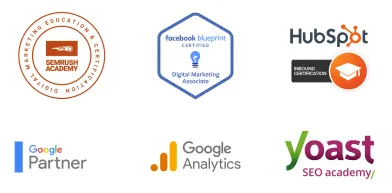TO LEARN IS TO GROW
Learning Center
We do our research and publish our results. Should probably call this the Growing Center.


Dealing with Threats to Your Online Reputation
After utilizing various marketing techniques to build your brand, what you have established is known as your online reputation. Having a reputation online is not a walk in the park to achieve, nor is it a bed of roses to maintain. There will always be situations coming your way to threaten your reputation.
Keep in mind that a reputation is the same as the face value of a company in real time. With how fast news can travel through social media, a company’s reputation is always on the edge, one wrong move and people will come yapping at your fan page for the entire world to see.
Thinking of a game plan to counteract threats to online reputation is quite simple. You might chuckle at this notion, but think of dealing with these threats the same way you’d deal with your significant other.
Let’s get started!
Listen. Take time to plan your actions thoroughly. You can start planning by listening to your customers’ woes before coming up with an apology. Read their statements and make sure that you take note of any significant detail that can help you solve their problem. By listening to your clients’ queries, you can easily determine the problem and evaluate the different approaches to solving it.
It’s Not You, It’s Me. You might have heard this statement from couples that are on the brink of a breakup, but let’s look at this from a different angle. Here’s a scenario:
A customer posted a negative comment on your company’s listing in a directory website. They claim that your coupon code for a discount on hair treatments is bogus but you know this isn’t true since you’re a catering company. Some websites give you the opportunity to explain your side. Always remember this: apologize first before explaining your side or making any comments. After apologizing, you can smooth this out by stating that they made a mistake in thinking that you were the same company they’re talking about. You can do this without making the person feel guilty of their assumption.
Honesty is the Best Policy. Admit that you’re wrong, there’s no harm in conceding. Remember to apologize while also addressing the client’s concerns. Facebook pages are real-time portals for customers and businesses to interact. Whatever happens there will be visible to other subscribers and “likers” of the page. Be courteous and communicate the message and problem of your customers.
Take a Deep Breath. Sometimes customers don’t stop at one retort, the chain of misery will continue on. Some would even revolt and begin taunting other people, triggering a chain of reactions from your fans. The result? An all-out war. Do your best to keep cool throughout the process. Calmly assuage the people and provide a contact number or email so they can direct their query to someone in charge instead of leaving them without an outlet. The real issue at hand is that people want to be heard.
Be Better, Not Bitter. Wounds leave scars once they are healed. The problem may be resolved, but it will leave a mark in your customer’s minds. Bad things tend to linger longer in people’s memory than good ones. Be better and promise that you will avoid letting such things happen again. Instead of jousting with the audience, apologize and provide a resolution that this will not happen again in the future. Let them know that you take their comments and concerns as reviews and are using them to ensure that your service continues to grow in a way that will better suit their wants and needs. Act natural, don’t forget that you’re a person too. You don’t need to be a heartless robot in dealing with the negative rants of your customers. Make them feel loved and important, that’s how your customers would like to be treated and empathy will go a long way.
After reading all of these tips, you are probably thinking that this is all stuff you already know. That’s because it is. If you were to sum all of it up, you’d call it common courtesy. That’s what your customers deserve and that’s most likely what you would like to receive in return. Although being nice won’t work for everyone because some people are just mean and will only be happy when they see others fail, most people will be soothed knowing you’re listening, you legitimately care, you really are sorry and you’re going to do something to right the wrong they have experienced.
Built for Growth. Backed by 25 Years of Trust.
For over two decades, LOJO has been a trusted partner to hundreds of businesses just like yours. Whether working directly with owners, managers, teams, or boards of directors, our goal remains the same: to be a reliable and results-driven asset to your business.
Over the years, we’ve carefully built a team of experts—each selected for their unique skills, strengths, and personalities. Our clients choose LOJO because they know we genuinely care about their success.
And after 25 years of helping businesses grow, we’re more committed than ever.



Built for Growth. Backed by 25 Years of Trust.
For over two decades, LOJO has been a trusted partner to hundreds of businesses just like yours. Whether working directly with owners, managers, teams, or boards of directors, our goal remains the same: to be a reliable and results-driven asset to your business.
Over the years, we’ve carefully built a team of experts—each selected for their unique skills, strengths, and personalities. Our clients choose LOJO because they know we genuinely care about their success.
And after 25 years of helping businesses grow, we’re more committed than ever.




Matthew Rogers, President
iProspect Check
After spending several months reviewing multiple proposals from several different companies we engaged LOJO to develop a new website that represents our company effectively. We worked initially with Stephen Platte who helped create the scope of the project. Stephen was knowledgeable and always followed up with me on time and as promised.
He "closed the deal" for LOJO with his professionalism, service orientation and easy going approach. Once we signed the contract we were introduced to Jay Kelly who would be the creative lead for LOJO. This was the most challenging part of the project for my company, as there was no shortage of ideas from our side. Jay managed the project flawlessly, and once we had all agreed to the design, Jay introduced us to Eric.
Eric Lay is one of the founders of LOJO. Eric took the design we had developed and brought it to life. We delivered content as quickly as he requested it. Eric kept the project on task and we responded by exceeding every deadline for content. In turn, once provided, literally not a day went by that Eric didn't add the content and take the next step. In just a few weeks we launched our new website. Eric is a pleasure to work with.
His positive attitude and consultative approach really enhanced the experience and made a big difference for us in the outcome of our project. We would welcome you to visit our website to take a look at the quality work of LOJO. We are very pleased with LOJO and look forward to working with them in the future as we pursue an aggressive SEO strategy."
After spending several months reviewing multiple proposals from several different companies we engaged LOJO to develop a new website that represents our company effectively. We worked initially with Stephen Platte who helped create the scope of the project. Stephen was knowledgeable and always followed up with me on time and as promised.
He "closed the deal" for LOJO with his professionalism, service orientation and easy going approach. Once we signed the contract we were introduced to Jay Kelly who would be the creative lead for LOJO. This was the most challenging part of the project for my company, as there was no shortage of ideas from our side. Jay managed the project flawlessly, and once we had all agreed to the design, Jay introduced us to Eric.
Eric Lay is one of the founders of LOJO. Eric took the design we had developed and brought it to life. We delivered content as quickly as he requested it. Eric kept the project on task and we responded by exceeding every deadline for content. In turn, once provided, literally not a day went by that Eric didn't add the content and take the next step. In just a few weeks we launched our new website. Eric is a pleasure to work with.
His positive attitude and consultative approach really enhanced the experience and made a big difference for us in the outcome of our project. We would welcome you to visit our website to take a look at the quality work of LOJO. We are very pleased with LOJO and look forward to working with them in the future as we pursue an aggressive SEO strategy."

Matthew Rogers, President
iProspect Check
The team at LOJO were wonderful to work with. They are well organized and very patient as we worked through our marketing strategy and developed a well thought out and clear action plan at a reasonable price. We will definitely be back for our future campaign needs."

Jon Crosby, Founder
Dazil

